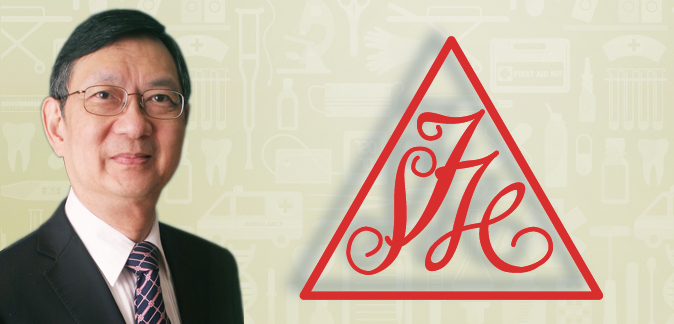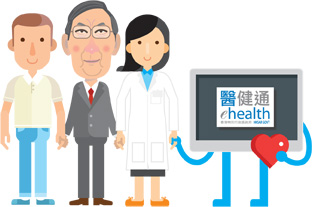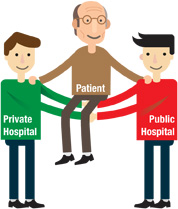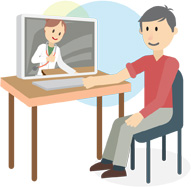 |
|
“We need to think out of the box and make use of the advantages of the Electronic Health Record Sharing System (eHRSS) to help the community.” |
Dr CM Wong,
Medical Superintendant,
St. Teresa’s Hospital
|
|
|
| |
|
St. Teresa’s Hospital (STH), one of the key players of the territory-wide eHRSS and its forerunner, Public-Private Interface – Electronic Patient Record (PPI-ePR), is a private hospital which aims to provide competent and quality healthcare services in Hong Kong.
“The well being of patients is our utmost concern. When it comes to using eHRSS, we will think about what is best for our patients,” said Dr Wong.
The essence of information sharing through eHRSS, Dr Wong pointed out, is that a patient’s health records can be readily available and easily accessible for reference by other doctors who take care of the patient, so as to provide more timely and appropriate treatment.
|
 |
|
eHRSS enables patients’ health records to be readily available and easily accessible for reference by other doctors |
|
|
|
| “Through eHRSS, we can get relevant and key health information of patients to help them when they come to us,” he said. |
| |
| Ready Compatibility with eHRSS |
| STH started developing its own clinical management system (CMS) as early as in 1995. Dr Wong said the hospital’s system has modelled on the one developed and used by the Hospital Authority (HA). “Our systems, in other words, are actually speaking the same language,” he described. |
| |
| For that reason, Dr Wong said STH’s system is readily compatible with eHRSS which used HA’s CMS as a blueprint. |
| |
| “Information captured in our system, such as allergy and adverse drug reaction (ADR), radiology examination and birth records, is now being shared and made available on eHRSS. Our next step is to upload discharge summaries, and laboratory and surgical reports,” he added. |
| |
 |
More types of records captured in STH’s system will be
uploaded to eHRSS in next phase |
| |
| Public-Private Partnership |
| Electronic health record (eHR) sharing can transform the way healthcare is delivered. A prominent example is the Public-Private Partnership (PPP) healthcare programmes. |
| |
| STH has been actively supporting PPP initiatives. For example, it has joined the Haemodialysis (HD) PPP Programme run by HA this year. Under the programme, eligible patients with end stage renal failure are referred to STH to receive HD service. |
| |
| Dr Wong said patients who have insurance coverage for or can afford some services from the private healthcare sector can benefit from these collaborative efforts, in which the public-private interface provided by eHRSS plays an important role. |
| |
| “Waiting time for medical tests in public hospitals can be long. We can speed up the process by utilising our hospital’s capacity in conducting these medical tests. Test results uploaded by us via eHRSS can be received by public hospitals immediately,” he remarked. |
| |
“This way, serious illnesses or conditions can be detected at an earlier stage, enabling timely diagnosis and treatment.”
As more and more patients with chronic diseases are receiving healthcare services from both public and private healthcare providers (HCPs) , Dr Wong said the latter can also help monitor these patients’ conditions.
“For instance, we can check, through eHRSS, what medications patients were given by other doctors and whether the medications were taken properly. We can also avoid duplication in prescriptions,” he explained.
Regular collaborative initiatives aside, STH also took up some clinically stable patients from public hospitals during the peak flu season in summer 2017. “Doing so can help relieve the demand surge on public hospitals’ services, while ensuring continuation of care for patients who shared their health records with us through eHRSS,” said Dr Wong. |
 |
| Private HCPs can help monitor the conditions of patients with chronic diseases as many are receiving healthcare services from both public and private sectors |
|
|
|
| |
 |
|
There is potential for combining eHR & other functionalities to deliver optimal healthcare services |
|
|
Integrate eHR Sharing with other Functionalities
Dr Wong believes that as society’s healthcare needs change, eHRSS can provide a platform to combine eHR and other functionalities to deliver optimal healthcare services. One example, he suggested, is to integrate eHRSS with telemedicine which has been practised in Mainland and many parts of the world.
“Our population is aging and elderly people are more likely to develop chronic diseases. Adopting telemedicine such as video consultation can save them the trips to hospitals for routine medical consultations, as travel can be difficult for seniors with chronic conditions and limited mobility,” he said.
“The technology is already there. Say if video consultation is enabled in elderly care homes, we can send a nurse there to check and upload patients’ vital signs such as blood pressure, with real time and remote consultations conducted by their doctors.”
|
|
| “If telemedicine is supported by eHR sharing, we can achieve better and enhanced care for patients. We can explore additional functionalities of eHRSS to meet the society’s needs.” |
| |
|
Future Development and Challenges in eHRSS
|
| On Stage Two Development of eHRSS, Dr Wong said he is looking forward to achieving further two-way eHR sharing through the system, especially imaging records. |
| |
| He also welcomed the idea of including Chinese medicine in eHR sharing, adding that it will be useful to know if patients are taking Chinese medicine and whether there is any interaction with western drugs. |
| |
| As to future challenges, Dr Wong highlighted the importance of data security as the usability of eHRSS expands. While acknowledging patients’ desire for greater privacy, he was concerned about allowing patients’ control over the scope of data sharing, saying that it could increase risks for patients themselves in the absence of comprehensive medical information for doctors to make clinical decisions. |
| |
|
Looking ahead, Dr Wong foresees that in a decade or so, all hospitals in Hong Kong will be using eHRSS to seamlessly exchange patients’ health records. “This will be an essential part of patient care and we, as HCPs, are keen to see it happen,” he commented.
|
| |
| |

|
| |
|

